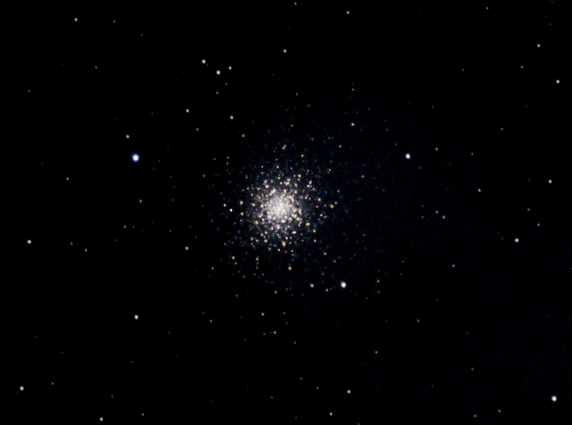
M3 is a magnitude 6.4 globular star cluster located about 35,000 to 40,000 light years from Earth. It is one of the three brightest globular clusters in the northern sky. It looks like a hazy "star" in binoculars. The cluster is a beautiful sight even in small telescopes, as demonstrated by this image which was taken with a small 3-inch refractor. The cluster contains thousands of stars, ranging from magnitude 11 down to the limits of visibility. Some estimates place the number of stars in the cluster at half a million stars. These stars occupy a spherical volume in space of about 220 light-years in diameter. This globular cluster is an ancient star group that formed about 10 billion years ago. The cluster orbits the Milky Way Galaxy, and is currently approaching us with a radial velocity of about 90 miles a second.
M3 was discovered by Charles Messier in 1764. It is one of four objects in the constellation Canes Venatici that appeared in Messier's catalog. The other three Messier objects are all galaxies discovered years later: M51 (discovered in 1773), M63 (discovered in 1779), and M94 (discovered in 1781). In addition, M106 in Canes Venatici is also included as a Messier object on modern versions of the Messier list.
This CCD image was taken with a Takahashi FS-78 refractor using an SBIG ST-8E CCD from my backyard in Scottsdale, Arizona.
M3 (NGC 5272)
Constellation: Canes Venatici
RA: 13h 42m 11s Dec: +28d 22' 34" (J2000)
January 11, 2004
Image by Sid Leach
Scottsdale, Arizona
Recent Images.
Complete list of images.
Description of equipment used to acquire images.
Home
Feedback and comments should go to Sid